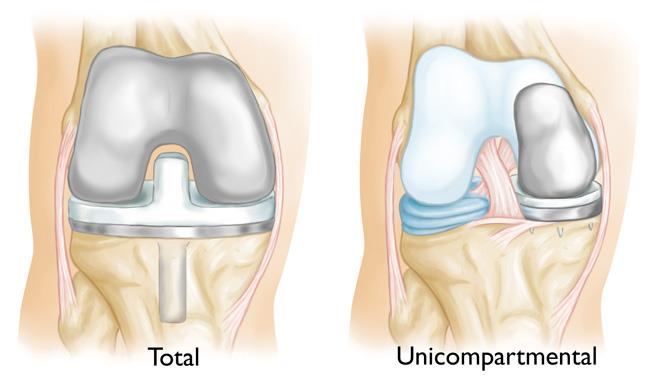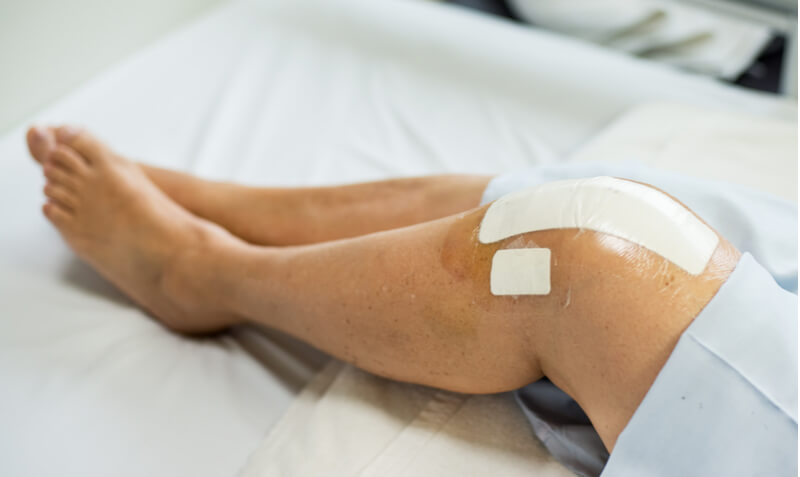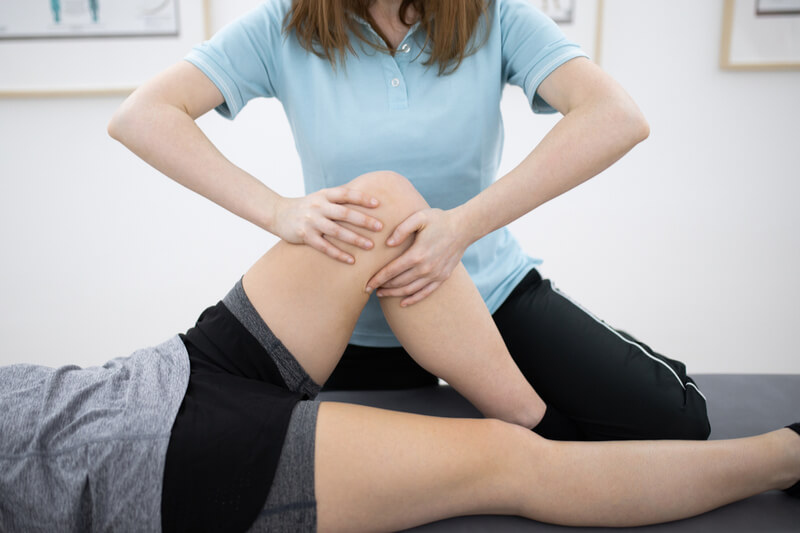Partial Knee Replacement Surgery - Considerations, Suitability, And Costs
Partial knee replacement, or unicompartmental knee replacement, is a common form of surgery among ageing adults in Singapore, especially those with frequent and chronic knee pain or issues.
What is Partial Knee Replacement?
As opposed to a total knee replacement, partial knee replacement addresses only the damaged portion of the knee while conserving knee ligaments and unaffected cartilage. Damaged portions of the knee that are usually replaced during this procedure are the medial (inside), lateral (outside), or the kneecap.

OrthoInfo, American Academy of Orthopaedic Surgeons (source)
Damaged tissue and bone are removed and replaced with an artificial implant, also known as a prosthetic.
Advantages of a partial knee replacement include:
-
- Smaller incision
- Lesser blood loss
- Lower risk of infection, stiffness, and blood clots
- Shorter recovery time
- Smoother post-op rehabilitation
- Easier surgery revision if necessary
When do you need a Partial Knee Replacement?
A partial knee replacement is required if they are suffering from notable pain and possess limited mobility due to osteoarthritis, a degenerative joint disease, in only part of the knee.
Osteoarthritis is caused by joint damage accumulated over time, such as:
-
- Torn cartilage
- Ligament injuries
- Dislocated joints
- Malformation of joints
- Obesity
- Poor posture
When the cartilage starts wearing away, bone-on-bone interaction of the knee joint makes completing even the simplest daily tasks tedious.

Who is suitable for Partial Knee Replacement?
Suitability for a partial knee replacement is widely dependable on:
-
- the severity of arthritis
- the primary location of the pain
- whether the wear-and-tear is situated in only one or multiple compartments of the knee
Individuals with rheumatoid arthritis may benefit better from a total knee replacement. However, individuals whose conditions have improved after taking rheumatoid arthritis medication can be considered for partial knee replacement.
What to expect during the Partial Knee Replacement surgery
Before the surgery, patients will be assessed if their medical and physical condition qualifies them for a partial knee replacement. As part of surgery preparation, patients should fully understand the benefits and potential risks of the procedure and have an aftercare plan ready. This will be formulated in discussion with the orthopaedic surgeon or physician.
During the surgery, patients will be administered with general anaesthesia. The surgeon will create a small incision to move the healthy supporting structures to the side. This allows for the damaged areas to resurface and removed before the implants can be inserted into the knee.
The surgical incision is then closed with a suture that will eventually dissolve under the skin. Once the procedure is completed, the patient will be sent to the recovery room to be monitored.

After the surgery, patients are encouraged to begin physical therapy as soon as possible, and this includes standing and walking exercises. In most cases, patients can be discharged within the next few days.
What is the rehabilitation process like?
Over the course of the hospital stay, the drain in the knee will be removed and the patient will be required to complete another round of physical therapy before leaving for home.
It is normal for pain levels to increase during the first few days at home. Fortunately, pain is well managed by taking the prescribed oral pain medication.
Exercises as instructed by the physical therapist should be done routinely, and patients are advised from going out and walking too much. Once the drying wound from the incision stops draining, it should be always left open to the air.
The good news is that there are no limitations for bending and straightening the knee during this time.

Rehabilitation process timeline
The first follow-up visit is typically scheduled 1 to 2 weeks post-operation. An X-ray will be taken, and depending on your progress, increased physical activity may be encouraged as well as further recovery instructions.
The second follow-up visit will be at the 4-to-6-week mark. Patients will be quite mobile and are able to carry out their daily routine as per before the surgery. It is common to feel a twinge of pain every now and then, but some patients have reported feeling no pain at this stage.
Cost of Partial Knee Replacement
The estimated all-inclusive cost of knee replacement surgeries in Singapore ranges from $19,000 to $32,000 at private hospitals. At public hospitals, the cost may range from $16,000 to $22,000.
Frequently Asked Questions (FAQs)
How long will the surgery take?
The entire partial knee replacement procedure will take about 45 to 60 minutes. Patients will be monitored in the recovery room after the surgery and encouraged to begin physical therapy as soon as possible.
What is physical rehab like after surgery?
Physical rehabilitation may continue for months after a partial knee replacement. Rehab helps patients strengthen the knee muscles that will aid in regaining close-to-normal movement.
Can I get partial knee replacement done on both knees simultaneously?
Partial knee replacement is a big decision and performing on both knees simultaneously may inflict more stress and strain on the body despite its convenience. Additionally, no specific medical benefits to having the procedure done on both knees simultaneously has been recorded. Speak to a qualified orthopaedic surgeon about your options to treat both knees.
Only a percentage of patients may qualify for a partial knee replacement in Singapore. As the aim of a knee replacement surgery is to relieve severe pain caused by osteoarthritis, some individuals will benefit better from a total knee replacement instead.
Speak to our orthopaedic surgeon if you are having pain and trouble with your knees. We are here to help you on your journey.
Is it alright to walk around with a sprained ankle?
This depends on the sprain's severity and what treatment has been rendered for the injury. Your doctor may advise you to only put minimal weight on your ankle while it is still recovering from the injury. Excessive walking may lead to more pain and swelling if the injury is stressed too early on.
How do I know if my ankle sprain is serious?
The nature of the initial accident or injury will provide a good idea about how fast it may recover. A serious injury is characterized by severe pain, swelling, and recurrent sprains despite efforts to support and treat it. If you are experiencing these, the soonest visit to the specialist is highly advised.
Can I claim insurance for my ankle injury?
Ankle sprains and injuries are insurance claimable. We do advise our patients to check with their personal or corporate insurance plans and representatives. We are also able to help them with this if required.
What should I do immediately after an ankle sprain while waiting for my appointment and treatment?
Timely self-care with rest, icing, compression, and elevation are important to manage the initial pain and swelling around the ankle. Anti-inflammatory medication will further reduce the pain and swelling that you may be experiencing.
I have more questions, how can I speak to a doctor?
Please call us at +65 6733 4565 (during office hours), or drop us a text or WhatsApp message at +65 9766 4565. We will reply to your queries as soon as we get them. You may also call to make an appointment to see Dr. Mizan for your ankle injury.